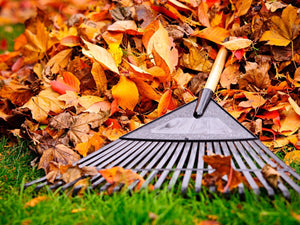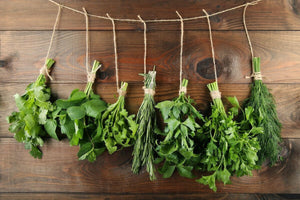Grow Beautiful Gomphrena: Proven Tips for Germination to Harvest
Low-maintenance flowers that can handle the hot summer sun and keep blooming are always welcome in my garden. Gomphrena, or Globe Amaranth, will fill up your garden with flowers from summer to frost. Look closely at their pom-pom blooms, and you’ll see their unique swirl pattern. These heirloom flowers will be your favorite summer blooms in gardens and arrangements.

I've grown to appreciate Gomphrena (Globe Amaranth) as a beautiful filler flower. Tucked in with dahlias, zinnias, or any array of flowers, it adds a touch of color and a unique shape.
Quick Links
Globe Amaranth or Gomphrena is a member of the Amaranthaceae family. It blooms from summer to the first frost. It doesn’t have pest problems and attracts all kinds of beneficial pollinators. Its blossoms look like clover, but it is an excellent filler flower with a long vase life.
Usually grown as an annual, Gomphrena (Globe Amaranth) is a perennial in zones 9-11. It is not frost-tolerant and will die in freezing weather.
The blossoms of Gomphrena are bracts, and they have a dry, papery look. They make beautiful dried flowers because they keep their color for years.
Plant Gomphrena in containers, cottage gardens, and flower farms. You can use this beautiful flower, fresh or dried. You’ll love how easy it is to grow Gomphrena from seed.

How to Grow Gomphrena from Seed
Gomphrena grows slowly at first. But once it is established, it will thrive in the summer heat. Start seeds in early spring so the Gomphrena seedlings will be ready for transplanting when the weather is warm.
Gomphrena Seed Germination Tips
These seed-starting tips will ensure successful seed germination. Gomphrena is a warm-weather flower and needs light and heat to germinate.
Start seeds indoors 6-8 weeks before the last spring frost. Plant seeds in moist seed starting medium. Press the seeds into the mix and spray with water. Keep the seeds moist and warm until they germinate in 5 to 14 days. A humidity dome can keep the soil moist but remove it after the seeds have sprouted.
Seeds need light to germinate.
Soak seeds for 24 hours before planting.
Use a heat mat to keep the soil warm. (70ºF)
Place grow lights close to the seedlings.
Gomphrena will grow slowly at first. Keep seedlings under grow lights for 16 hours a day. (They do need a few hours of dark.)
Seeds can also be direct sown but need to stay moist and warm to germinate.

Transplanting Gomphrena
Gomphrena can be transplanted outdoors when the weather is warm. Consider this a warm-season plant like tomatoes and peppers.
Wait until the soil is warm, 65ºF, and temperatures are 70ºF before transplanting outdoors. If needed, you can pot up as the plants grow until they are ready to go outside. Give them time to acclimate to outdoor conditions by hardening them off.
Space plants 6-18” apart. Spacing closer together is recommended for encouraging taller growth.

Growing Gomphrena-Globe Amaranth
This low-maintenance flower thrives in the hot summer sun. Gomphrena may seem to be getting off to a slow start in the spring, but it will be the star of the summer flower season. It will fill in any sunny blank spot and is excellent for vase bouquets.
Sun
Grow Gomphrena in full sun. A minimum of 6 hours of direct sunlight is needed for this plant to flourish.
Soil
Gomphrena is not fussy about the soil and tolerates a wide pH range. It can grow in any kind of soil as long as it drains well.
Water
Once the plants are established, Gomphrena is drought tolerant. This means you won’t have to stress about summer watering. However, you’ll have nicer-looking flowers if you give consistent water.
Fertilizer
This low-maintenance plant doesn’t need extra fertilizer. Adding compost before planting is sufficient for healthy growth.

Harvesting Gomphrena
You want to cut flower stems when they are at their peak to ensure the best color and longest vase life. Firm stems and fully colored flowers will last for up to two weeks in a vase. Flowers harvested too early will droop. Flowers harvested past their prime won’t last as long and will be less vibrant.
The wiggle test will tell you if the stems are ready. When you hold the stem and wiggle the plant, the whole stem should move. If only the head flops back and forth, the stem is not quite ready.
The flowers, or bracts, should be round and at their full color. If the bracts have elongated, they are past their prime. At this point, they won’t last long in a vase and will start shedding. They also won’t hold their color as they dry.
Harvest Gomphrena in the morning when they are the most hydrated. Cut stems at the base of the plant right above a leaf node. This gives you more to work with in flower arranging. This spot will also regrow new branches. Gomphrena is a cut-and-come-again flower, so the more you harvest it, the more it will grow.
You can read more about flower farming and cutting flowers in our Planter's Library.
Pests & Diseases
Gomphrena isn’t known for having pest and disease problems. Once Gomphrena are flowering, deer usually leave them alone. Powdery mildew can be a problem in very humid climates. Make sure the soil drains well. Aphids and flea beetles can sometimes attack small plants.
Gomphrena Companion Flowers
Gardeners always want to know what they can grow with Gomphrena. Flower farmers plant them with other flowers that make stunning arrangements. Zinnias, cosmos, and sunflowers are all summer-blooming flowers that will ensure you have a beautiful mix of flowers. They can also be planted around rose bushes and other perennial plants.
FAQs
Will Gomphrena come back each year?
Gomphrena is not frost-hardy and will only be a perennial in zones that don’t freeze.
Do you need to pinch back Gomphrena (Globe Amaranth)?
Gomphrena naturally puts out a lot of branches. Flower farmers often don’t pinch back because they want longer stems. But if you want a more dense plant with lots of branching, pinch back when it sends out its first branches.
Is globe amaranth a cut-and-come-again flower?
Globe amaranth is a very reliable cut-and-come-again flower. The more you harvest, the more it grows up until frost.
Why aren’t my Gomphrena seeds sprouting?
Common issues include cool soil, deeply buried seeds, or poor seed quality. Keep soil warm and moist, and don’t cover seeds too deeply.

Don’t miss Gomphrena's laid-back style. This heat-loving, drought-tolerant flower thrives with minimal care—just snip a few blooms to enjoy indoors, and it keeps rewarding you with more. Its vibrant, globe-shaped flowers attract pollinators and make stunning fresh or dried arrangements.
Plant Gomphrena (Globe Amaranth) from seed and watch your garden burst with color all season long. With so many blooms, you'll have plenty to share with pollinators and neighbors alike!
Written by Beverly Laudie
Popular Posts
-

More Than Mulch: 6 Ways to Use Fall Leaves in Your Garden
-

How to Dry Fresh Herbs to Preserve that Garden-Fresh Flavor







Leave a comment